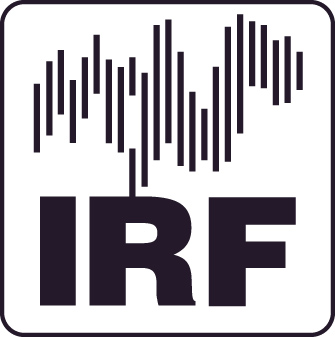

|
| Overview |
| Topical |
| Popular Science |
| Research |
| Observatory |
| Data |
| SEARCH |
| |
| IRF Kiruna |
| IRF Umeå |
| IRF Uppsala |
| IRF Lund |
|
MAP 
|
|
|

Left: LAP's placement on the Rosetta spacecraft; right: ICA's placement on Rosetta (ESA and IRF)
The European Space Agency's Rosetta spacecraft was launched from Kourou in French Guiana on 2 March 2004 and is now following a comet called 67P/Churyumov-Gerasimenko in its elliptic orbit around the Sun. It reached the comet in 2014 after a 10 year journey and has followed it closely for more than a year as it rounded the Sun.
The Swedish Institute of Space Physics (IRF) participates with two instruments on board: an Ion Composition Analyser (ICA), from IRF in Kiruna, and a dual Langmuir probe (LAP), from IRF in Uppsala. These instruments concentrate on measuring the partly ionized gas and dust exhausted by the comet nuclei (about 4 km across) as it is heated by the Sun. The IRF instruments are part of the Rosetta Plasma Consortium (RPC), a group of five instruments sharing a common electrical and data interface with the Rosetta spacecraft, and are the first of their kind in long-time orbit around a comet. Previous missions, such as the ESA spacecraft Giotto to comets Halley and Grigg-Skjellerup, have only by-passed comets at great speed, while Rosetta is moving around Churyumov-Gerasimenko with a speed on the order of a metre per second, giving unprecedented measurement opportunities.
The spacecraft spent 31 months in hibernation during the latter stages of its approach to the comet, but on 20 January 2014 ESA successfully reestablished contact with it right on schedule. After the essential health checks on the spacecraft were completed the eleven instruments on the orbiter (including IRF:s two) were turned on and began studying the comet.
For IRF it was a nervous moment was when we test-drove our own instruments for the first time after the period of hibernation, on 24 March (LAP) and 26 March (ICA), but since then our equipment has been making measurements of the cometary environment at close quarters. We still have more than another year of measurements to look forward to before the planned end of the mission.
The Rosetta spacecraft also had a lander on board, Philae, with another 10 instruments. On 12 November 2014 the lander left Rosetta and successfully landed on the comet itself. When Philae landed it was one of the highlights of the mission, on which we have been working for 20 years. The Swedish contributions are on board the mothership, not the lander, but we are of course interested in the data from its instruments which will give us answers to some questions we can't even answer from the Rosetta spacecraft.
LATEST NEWS
The Rosetta spacecraft ended its mission on 30 September when it landed on the nucleus of comet 67P/Churyumov-Gerasimenko.
| Launched: | 2 March 2004 from Kourou, French Guiana |
| Destination: | Comet 67P/Churyumov-Gerasimenko |
| IRF instruments: |
RPC-ICA (Rosetta Plasma Consortium - Ion Composition Analyser, PI: Hans Nilsson) RPC-LAP (Rosetta Plasma Consortium - Langmuir probe, PI: Anders Eriksson) |
| Contact: | Scientific information: Assoc. Prof. Hans Nilsson, tel. +46-980-79127, hans.nilsson@irf.se (ICA); Dr Anders Eriksson, tel. +46-18-471 5945, aie@irfu.se (LAP) |
| |
Technical information (ICA): Herman Andersson, tel. +46-980-79034, herman.andersson@irf.se |
| Satellite page: | Rosetta web page at ESA |